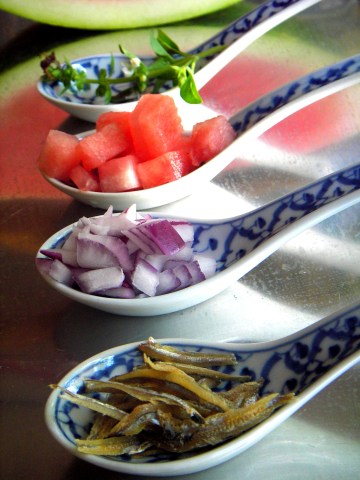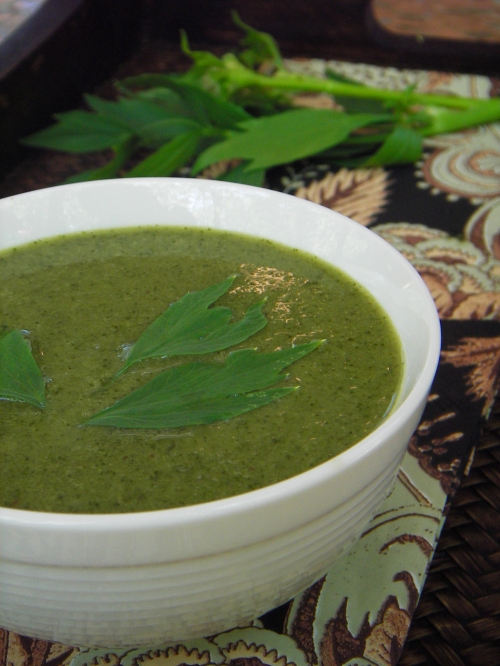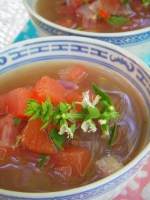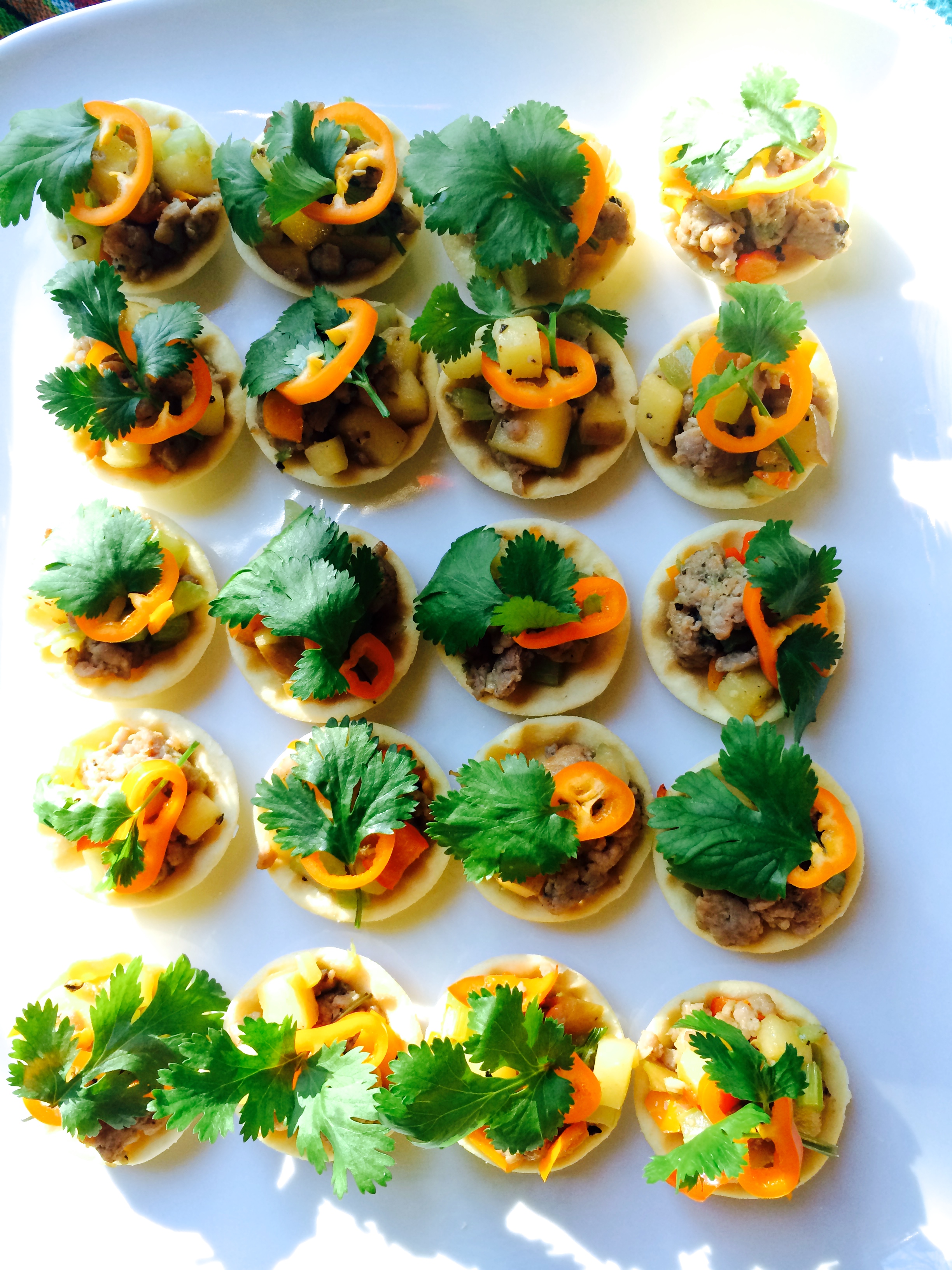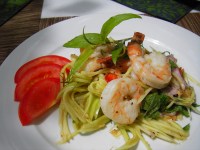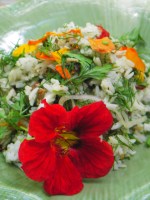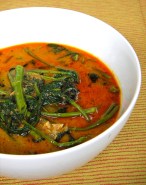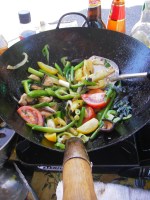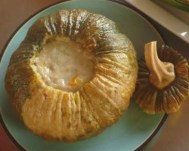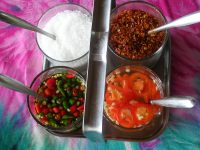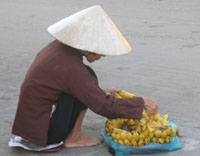Happy as a Clam in a Lemongrass Broth
I am as happy as a clam in Seattle, where we have been having the best summer ever and a plentiful harvest from the land and the sea. The freshest of these local harvests bring the best flavors to our table. This recipe is an example of fresh local steamer clams from Washington State cooked in a simple Thai style: steamed clams with lemongrass. Many of you already have your own favorite recipe for cooking clams, but today I hope you can try my family’s favorite recipe. Often when we find fresh clams we prepare Hoi Tom Takrai in large pot so that we can each serve ourselves a bowl full of หอยต้มตะไคร้ – Hoi Tom Takrai – Steamed Clams with Lemongrass Broth.

Hoi Kao Tom Takrai – หอยขาวต้มตะไคร้ at Baan Keang Lay Seafood Restaurant
The photo above is of the หอยขาวต้มตะไคร้ – Hoi Kao Tom Takrai that I enjoyed when I was traveling in Thailand between Samui Island and Phuket. My route was on 4177 via Kanchanadit, Surat Thani. If you make this same trip, I would recommend that you stop for a meal at the Baan Keang Lay Seafood Restaurant. It is located at 124 Moo 7 Tumbol Kadae, Kanchanadit, Surat Thani in a fishing village of Kadae. Locals, as well as visitors from near and far, come here for fresh seafood and especially for Hoi Kao Tom Takrai, a local white clam cooked in a scented lemongrass broth. White clams – Hoi Kao – หอยขาว are only available in the gulf of Thailand and along the Pacific Ocean. (For more pictures, please view my photos from our trip and lunch experience at Baan Keang Lae Seafood.)

Baan Keang Lae Seafood
บ้านเคียงเลซีฟู้ด 124 หมู่ 7 ต.กะแดะ จ.สุราษฎร์ธานี, อ.กาญจนดิษฐ์
Baan Keang Lay Seafood Restaurant, 124 Moo 7 Tumbol Kadae, Kanchanadit, Surat Thani
ต้มตะไคร้ – Tom Takrai
Tom Takrai is a traditional method of cooking fresh seafood in the southern region of Thailand, and it was a daily practice in our village. You may use the same recipe to cook any seafood. It is similar to steaming but uses just a small amount of water. It is a fast method that produces moist and tender meat. The broth is good as a soup, or can be kept to use in a recipe that requires clam juice or fish stock. It is a fresh tasting broth with a lemongrass aroma.

Clam, lemongrass, Thai chili, garlic and fresh basil or lemon thyme
I made Tom Takrai recently at home. After cleaning the clams, I simply placed the cleaned clams, water, lemongrass, garlic, a lightly smashed chili, and fresh herbs like Thai basil or lemon thyme in the wok or pot. Then I covered and cooked them until almost all the clams were open, and discarded the ones that were not. I squeezed some lime juice over the top, stirred, and they were ready for the table. I didn’t have Thai basil, but I did have plenty of thyme, which was a good substitute in a clam dish.

Thai-style Steamed Clams with Lemongrass
Thai Steamed Clam with Lemongrass
Hoi Tom Takrai
หอยต้มตะไคร้
No salt or fish sauce is needed for this dish, just enough water to balance out the natural saltiness of the clams—about 1/4 cup to 1/2 cup for a pound of clams. I use a glass lid, so I can see when all the clams are open. Serve at once when the scents of the sweet clam juice and the lemongrass are at their highest point. You can slurp up the clam broth or save and bottle it if some is left. It is just the best marriage and the cleanest flavor: clam and lemongrass.
Serves: 1
Cooking time: 2 to 3 minutes after the water comes to a boil
1 pound clams, cleaned, then soaked in cold water for 15 minutes and rinsed 1 stalk lemongrass, trimmed and smashed (see Pranee’s video for step-by-step how to prepare lemongrass) 1 fresh Thai chili, smashed lightly 3 cloves garlic, peeled and crushed lightly1 shallot, peeled, quartered and crushed
6 leaves Thai basil, or 3 kaffir lime leaves and 3 sprigs of lemon thyme 1 tablespoon lime juice, about 1 medium-size lime
Place clams, lemongrass, Thai chili, garlic, shallot, and Thai basil or thyme in a wok or sauté pan. Add 1/4 cup water and cover, using a see-through lid if you have one. Bring to a boil and cook until the clams are completely open, about 2 to 3 minutes. Stir in lime juice and serve immediately.
Related articles
- Baan Keang Lae Seafood Restaurant Review (lovesurat.com)
- Champagne Clams with Chilli, Almonds + Zucchini (fingerforkknife.com)
- Clams with Lemongrass and Chili (marthastewart.com)
- Thai Steamed Clams (ramalaysia.com)























